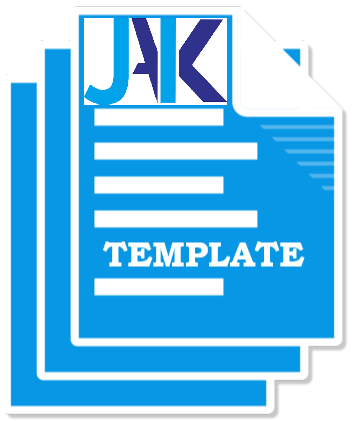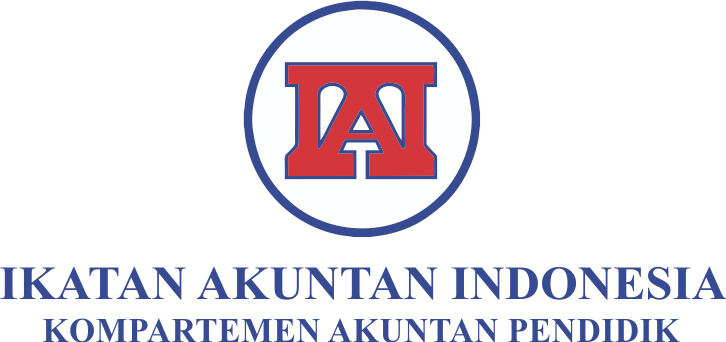PENGARUH RETURN ON ASSET (ROA), CURRENT RATIO (CR), DEBT TO ASSET RATIO (DAR), DAN CAPITAL INTENSITY RATIO (CIR) TERHADAP AGRESIVITAS PAJAK
Abstract
The purpose of Tthis research is to know and analyze the influence of Return on Assets (ROA), Current Ratio (CR), Debt to Assets Ratio (DAR), and Capital Intensity Ratio (CIR) to Tax Aggressiveness. The population in this study is the Manufacturing Compinies listed in Indonesia Stock Exchange for the period 2012-2017. Sampling method is purposive sampling with some of criteria that procedure a final sample in quantities of nineteen (19) companies as the sampel. The research method used is secondary data. Technique of data analysis that be used is analysis regresion of pooled data Ordinary Least Square (OLS) method used software SPSS version 16.0. The result show that simultaneouslyRReturn on Assets (ROA), CCurrent Ratio (CR), Debt to Asset Ratio (DAR), and Capital Intensity Ratio (CIR) have significant effect based toTTax Aggressiveness. Partially,RReturn on Assets (ROA) has positive and significant effect toTTax Aggressiveness. Debt to Asset Ratio has negative and significant effect to Tax Aggressiveness. While Current Ratio (CR) and Capital Intensity Ratio (CIR) have no effect to Tax Aggressiveness.
Keywords
Full Text:
PDF (Bahasa Indonesia)References
Chen, S., Chen, X., Cheng, Q., and Shevlin, T. (2010). Are Family Firms More Tax Aggressive Than Non-Family Firm?, Journal of Financial Economics, 95. Page. 41-61.
Citra Lestari dan Maya Febrianty. 2016. Pengaruh Capital Intensity Ratio, Inventory Intensity Ratio, Ownership Structure, dan Profitability terhadap Effective Tax Rate. Jurnal Ilmiah Mahasiswa Ekonomi Akuntansi Universitas Syiah Kuala, Vol. 1 No. 1. Hlm: 101-119.
Danis dan Zulaikha. 2014. Pengaruh Size, Leverage, Profitability, Capital Intensity Ratio, dan Komisaris Independen terhadap Effective Tax Rate (ETR). Jurnal Akuntansi Universitas Dipenogoro, Vol. 3 No. 2. Hlm. 1-9.
Derashid, Chek., and Hao Zhang. 2003. Effective Tax Rate and the Industrial Policy Hypotesis: Evidence from Malaysia. Journal of International Accounting and Taxation, 12, P:45-62.
I Dewa Ayu dan Abdul. 2015. Pengaruh Pengungkapan Corporate Social Responsibility terhadap Agresivitas Pajak. Jurnal Akuntansi Universitas Dipenogoro, Vol. 4 No. 2. Hlm: 1-9.
Indonesia Stock Exchange (IDX). PT Bursa Efek Indonesia. Diakses pada 30 Maret 2018 dari http://www.idx.co.id/
Irvan dan Henryanto. 2015. Pengaruh Likuiditas, Leverage. Manajemen Laba, Komisaris Independen, dan Ukuran Perusahaan terhadap Agresivitas Pajak. Jurnal Akuntansi Universitas Tarumanagara Jakarta, Vol. XIX No. 03. Hlm: 380-397.
Jaka Sriyana. 2014. Metode Regresi Data Panel, Edisi Pertama. Yogyakarta: Ekonisia.
Kasmir. 2017. Analisis Laporan Keuangan, Edisi Pertama. Jakarta: Rajawali Pers.
Kementerian Keuangan Republik Indonesia. APBN 2017. diakses pada 14 Maret 2018 dari https://www.kemenkeu.go.id /apbn2017
Khusniyah dan Nur Diana. 2017. Pengaruh Size, Leverage, Profitability, Capital Intensity Ratio, dan Activity Ratio terhadap Effective Tax Rate (ETR). Jurnal Ilmiah Riset Akuntansi Universitas Islam Malang, Vol. 06. No. 17.
Kraft, Anastasia. 2014. What Really Affects German Firms’ Effective Tax Rate? Internastional Journal of Financial Research, Vol. 5 No. 3.
Krisnata dan Supramono. 2012. Pengaruh Likuiditas, Leverage, Komisaris Independen dan Manajemen Laba terhadap Agresivitas Pajak. Jurnal Keuangan dan Perbankan Universitas Kristen Satya Wacana, Vol. 1 No. 2. Hlm: 167-177.
Lanis, R. and Grant Richadson. 2007. Determinants of The Variability in Corporate Effective Tax Rates and Tax Reform: Evidence from Australia. Journal of Accounting and Public Policy, Vol. 26 Issue 6. Page: 689-704.
Liu, Xing. and Shujun Cao. 2007. Determinant of Corporate Effective Tax Rate: Evidence from Listed Companies China. Journal of Chinese Economy, Vol. 40 Issue 6. Page: 49-67.
Luke dan Zulaikha. 2016. Analisis Faktor yang Mempengaruhi Agresivitas Pajak. Jurnal Akuntansi dan Auditing Universitas Dipenogoro, Vol. 13 No. 1. Hlm: 80-96.
Novia dan Wahyu. 2015. Pengaruh Corporate Social Responsibility, Ukuran Perusahaan, Profitabilitas, Leverage, dan Capital Intensity terhadap Agresivitas Pajak. Jurnal Akuntansi Universitas Dipenogoro, Vol. 4 No. 4. Hlm: 1-14.
Sutrisno. 2013. Manajemen Keuangan Teori, Konsep, dan Aplikasi, Edisi Pertama. Yogyakarta: Ekonisia.
Tribunnews. 2017. Indonesia Masuk Peringkat Ke-11 Penghindaran Pajak Perusahaan, Jepang No. 3. diakses pada 16 Maret 2018 dari http://www.tribunn ews.com/internasional/2017/11/20/indonesia-masuk-peringkat-ke-11-penghi ndaran-pajak-perusahaan-jepang-no3
Peraturan Perundang-undangan:
Undang – Undang No 16 Tahun 2009 tentang Perubahan Keempat atas UU No 6 Tahun 1983 tentang Ketentuan Umum dan Tata Cara Perpajakan.
Undang – Undang No 36 Tahun 2008 tentang Perubahan Keempat atas UU No 7 Tahun 1983 tentang Pajak Penghasilan.
DOI: https://doi.org/10.37058/jak.v14i2.1231
Refbacks
- There are currently no refbacks.
Copyright (c) 2019 JURNAL AKUNTANSI

This work is licensed under a Creative Commons Attribution-NonCommercial-ShareAlike 4.0 International License.

Jurnal Akuntansi by Jurusan Akuntansi Fakultas Ekonomi dan Bisnis Universitas Siliwangi is licensed under a Creative Commons Attribution-NonCommercial-ShareAlike 4.0 International License.
Based on a work at http://jurnal.unsil.ac.id/index.php/jak.
Jurnal Akuntansi Visitor Counter JAK Stats





